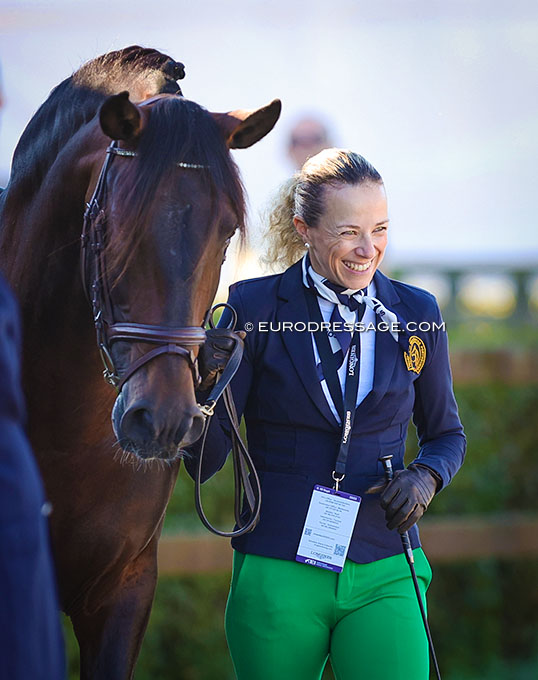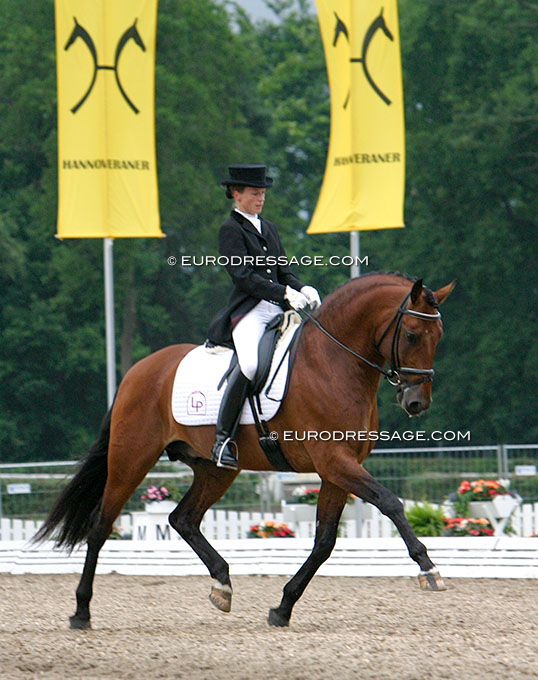
- Text by Sarah Warne-Furtado for Eurodressage
“A sensitive horse” that “that wants to work with you” is what International dressage rider and trainer Kyra Kyrkland looks for in a young horse.
Curious as to what the top riders and trainers look for when searching for their next young dressage partner, I decided to ask some experienced riders and trainers what they want to see from a young age.
Kyra Kyrklund
Having trained so many horses, and so many horse and rider pairs to Grand Prix level, Kyra says she looks for freedom in the gaits, and a good hind leg.
“I want to see an active hind leg, one that from nature steps under the body,” says Kyra. “I don’t want a horse that only pushes with the hind leg out, but one that I see can carry the weight on the hind leg.”
Kyra then looks to the front of the horse, and the conformation of the head and neck.
“I want a good neck. The whole front of the horse has to come up easily, and he must have a good connection between the neck and the head,” adds Kyra. “I remember seeing Russian Trainer Ivan Kizimof take a carrot and use it to raise the head and neck of the horse up and then the nose in to the vertical, testing to see if that position (the position for Grand Prix) was easy enough for the horse.”
In terms of riding sensation Kyra likes sensitive horses, that are prepared to work with you.
“When you get on a new horse, and after just a few laps around the arena they start to ask “what do you want?”. You feel the horse wants to work together with you, and that he is prepared to change a little bit too.”
If the goal is Grand Prix then Kyra would steer away from a horse that was too low in the neck, as they will find it difficult to come up.
“I am happy though if someone comes to me and they say they want to go as far as they can with this horse. Not all of the horses become Grand Prix horses, but for Grand Prix horses this is what I would keep in mind,” adds Kyra.
Maria Caetano

“The willingness to cooperate and to learn new things would be my first priority,” says Maria. “Then I try to test the elasticity of the back and his acceptance of the lateral aids. If he can understand the inside leg pushing towards the outside rein is fundamental for him to follow the right training in the future. So from an early age I try to feel if the horses are willing to accept these aids in a very soft way.”
The Portuguese Olympian says it is very difficult to evaluate if a horse will do Grand Prix in the future, but there are signs that help us to make that prediction.
“A good contact together with good elasticity and activity from behind helps in the future towards Grand Prix. However, the willingness to cooperate with the rider is, in my point of view, the most important thing.”
Laura Tomlinson

“Attitude, even if it’s not perfect, but also attitude to work with me,” says Laura. “Sharp, sensitive, without being unworkable. I don’t mind a little crazy, as long as they want to work with me. If I put my leg on and they jump it’s not a problem as long as there is a reaction. Are they awake, are they listening?”
Laura hopes that given the direction the sport of dressage is going in, horses will have to be chosen for more than just their athletic ability.
“More and more the judges are looking for harmony as well as big movers. It is very hard to have a harmonious picture with a horse that just isn’t up for it!” adds Laura.
More Opinions
“I always take a good look at the body of the horse, because some bodies are just easier to work than others,” says Portuguese Grand Prix rider Jeanette Jenny.

When ridden Jeanette wants to feel the horse has good balance and elasticity. “A good reaction to my legs and reins, and just overall a horse that likes working with me," Jenny stated.
For American Grand Prix rider Shannon Peters rideability and willingness top the list!
“A natural forward way of going. A horse that is brave, confident, and with a natural self carriage and suppleness also.”
Photos © Astrid Appels